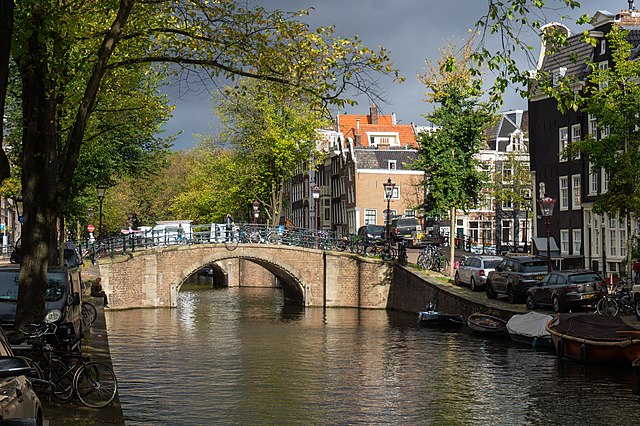Amsterdam has a long and eventful history. The origins of the city lie in the 12th century, when fishermen living along the banks of the River Amstel built a bridge across the waterway near the IJ, which at the time was a large saltwater inlet. Wooden locks under the bridge served as a dam protecting the village from the rising IJ waters, which often flooded the early settlement. The mouth of the river Amstel, where the Damrak is now, formed a natural harbor, which became important for trading-exchange from the larger koggeships into the smaller ships that sailed the merchandise deeper into the hinterland.
Amsterdam around 1662. The ring of canals is now complete.
Amsterdam and surroundings around 1770. The expansion has come to a standstill.
The Gift Letter of 1275, Toll-privilege
Het Houten Huys, Begijnhof - a rare wooden house from before the fire of 1452
Amsterdam is the capital and most populated city of the Netherlands. It has a population of 921,402 within the city proper, 1,457,018 in the urban area and 2,480,394 in the metropolitan area. Located in the Dutch province of North Holland, Amsterdam is colloquially referred to as the "Venice of the North", for its large number of canals, now a UNESCO World Heritage Site.
Image: Keizersgracht Reguliersgracht Amsterdam
Image: Reguliersgracht, Amsterdam
Image: Concertgebouw 04
Image: South facade of the Rijksmuseum Amsterdam (DSCF0528)








